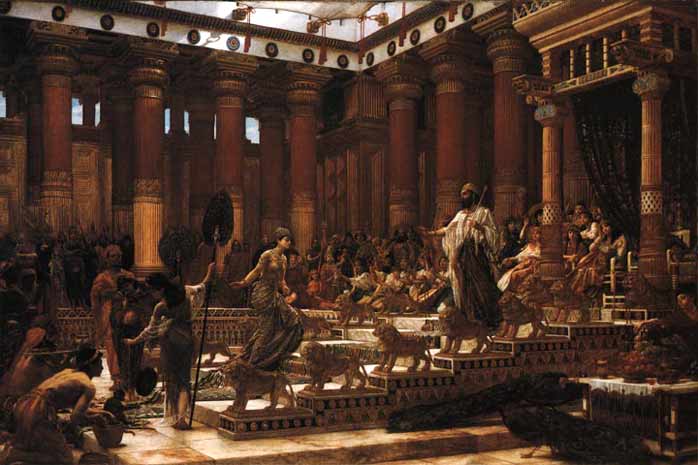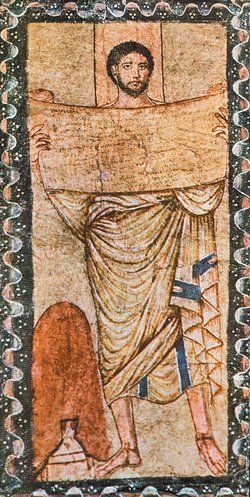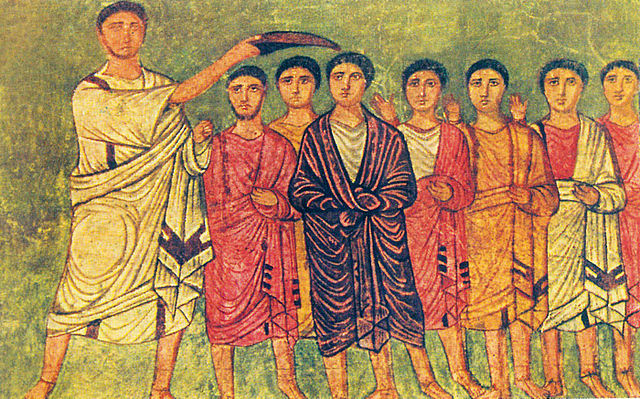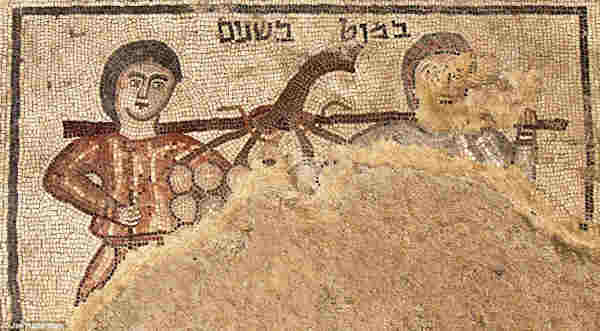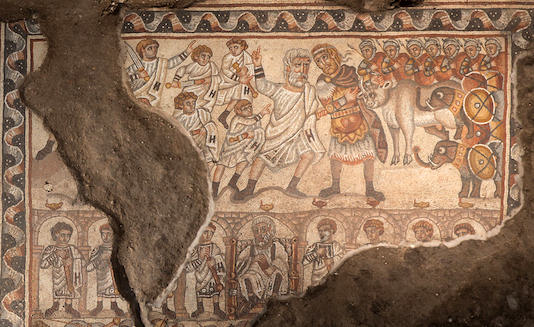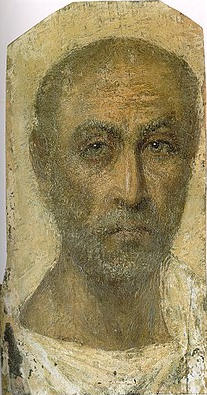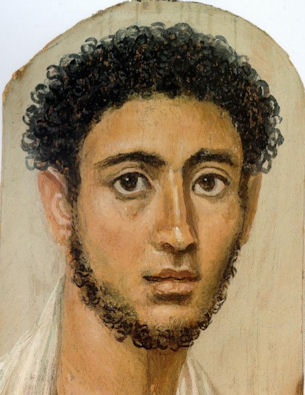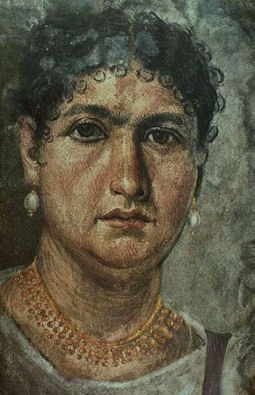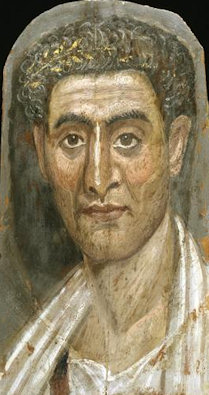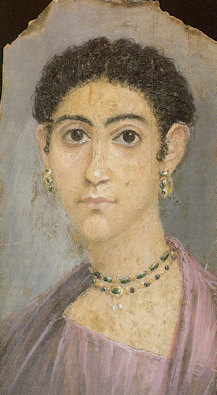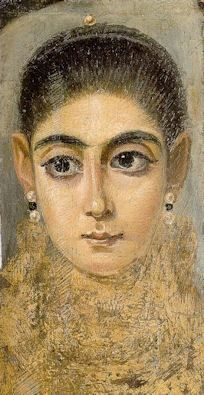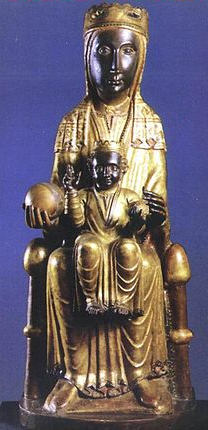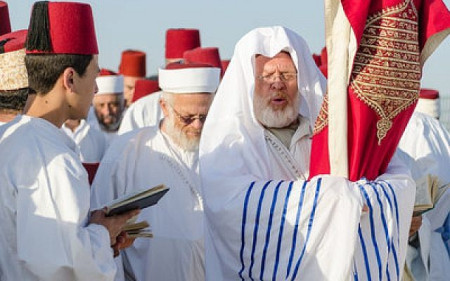U.S. Census
Today's anti-racists are insistent that race is a social
construct: "To be sure, like the rest of race, whiteness is a
fiction, what in the jargon of the academy is termed a social
construct, an agreed-on myth. . ." (White
Fragility, Robin DiAngelo, Foreword by Michael Eric Dyson, p. 3 of
13). But they are equally insistent
that nobody constructs it right except for them. What does the U.S.
Census understand a white person to be?:
"White - a person having origins in any of the original
peoples of Europe, the Middle East, or North Africa."
(About Race, U.S. Census
web-site,
Topics.)
Under that definition, a middle eastern Jew is, by definition, white.
That's always been the way it is, as race has been socially
constructed, in the U.S.A. Why do so many people today insist that
Jesus, a middle Eastern Jew, is non-white? Did the bureaucrats who conduct the Census hold
a vote among American Jews to discover their preference? That is what they forgot to do when they
moved Hispanic people from the 'white' column to the 'other' column,
and it's a fatal mistake.
An old church friend, when we used to drive past a
graveyard, would query, "How many dead people in there?" I'd
reply, "I really don't know." To which he would shout,
triumphantly, "All of 'em!" Can't argue with that. Jesus is white,
as are all from the Middle East, according to the Census Bureau.
Perhaps they feel constrained to comply with legal precedent, such
as Dow vs. United States, which held that a Syrian Arab is white. In
any case, Middle Eastern Jews are white, by definition. Wittgenstein
said, there are no private languages; but then he never encountered
the anti-racists.
It is claimed that 'white people' began their career as
Anglo-Saxon only, then amalgamated various groups to themselves,
ultimately drawing in even Jews: "Initially the property of only
Anglo-Saxons, whiteness was denied to the first Irish immigrants and
then granted in the nineteenth century. Italian, Polish, and Jewish
immigrants went through a similar transformation. . .In time, as
whiteness was transformed yet again, Jews too became white, even as
their non-Christian status continued to set them apart in the larger
American society." (Blood Politics, Leonard
Zeskind, p. 374). This is pure fantasy.
From the time when 'Caucasians' were invented, they tended to pull
North Africans and the like into their sphere of gravitational
attraction: "Caucasian variety. Color white, cheeks rosy. . .To
this first variety belong the inhabitants of Europe (except the
Lapps and the remaining descendants of the Finns) and those of
Eastern Asia, as far as the river Obi, the Caspian sea and the
Ganges; and lastly, those of Northern Africa." (Johann Friedrich
Blumenbach, On the Natural Variety of Mankind, pp. 229, 264-265,
quoted p. 1337, Nell Irvin Painter, The History of White People). If
race is a social construct, there you have it; it's an artifact of
the cultural history of mankind. If, however, race is a natural
category, then Blumenbach might be wrong. You cannot have it both
ways. If race is a social construct, then racial essentialism cannot be
correct. Refusing to have it both ways is a simple and economical way of
putting 'white studies' out of business. North Africans are
legitimately intermediate between Sub-Saharan Africans and
Europeans; what is their 'proper' classification?
Modern academia advances the
notion that 'white' is a growing
category; they say the Irish, Italians, and Poles were not originally
classed as 'white,' but only become so later: "Race is a social
construction, and thus who is included in the category of white
changes over time. As the Italian American man from my workshop
noted, European ethnic groups such as the Irish, Italian, and Polish
were excluded in the past." (White Fragility,
Robin DiAngelo, Chapter 2, Page 13 of 98). In fact it is a
shrinking category. The 'white' category was as compendious as it
would ever be, at the dawn of the republic, based on what were
believed to be the findings of anthropology and ethnography. Did
Blumenbach's category 'Caucasian' really exclude Italians, Irish and
Poles? Of course not; it included not only all Europeans, but also
Middle Eastern Arabs and Jews, as well as North Africans. The class was
larger than any modern notion of a 'white race,' not smaller, though
it lingers still in the the U.S. Census' inherited categories. The claim that
American immigrants are nouveau-white folks
arose as an artful dodge, an improvisation to explain where was their 'white privilege' when
those groups needed it, when they started out on the very bottom
rung of the U.S. economic ladder. They were not really even competing
with African-Americans for these jobs, because prior to 1910, over
90% of the African-American population lived in the South. The people who came here as
immigrants were not privileged in the slightest; they tell the story
of an Italian immigrant, who came to American, believing that the
streets were paved with gold. When he got here, he realized that,
not only were the streets not paved with gold, they weren't paved at
all! And not only were the streets not paved, he was expected to
pave them! But what has that got to do with being 'white'? You would
think, wouldn't you, that, the claim being made that white people
are privileged, this claim could be disproved by pointing to the
existence of many white people who are dirt poor, then as now. You
don't get it, do you? They are not white: ". . .poor and
working-class people were not always perceived as fully white."
(White Fragility, Robin DiAngelo, Chapter 2, p.
17 of 98). How do we know they are not white? Because they
are poor! We argue in a tight little circle around here.
If the government allots privileges,
such as the right to become a naturalized citizen, which they never
should have done, on the basis of race, then what policy could be
more enlightened than to draw the boundaries of the privileged group
as broadly as possible, as did Blumenbach? The founding myth of the
racial grievance industry is that, "Race science was driven by these
social and economic interests. . ." (Robin
DiAngelo, White Fragility, Chapter 2, p. 6 of 98), as if
the German Blumenbach, who was personally opposed to slavery, knew or cared about
the interests of colonial American planters! Germany had no New World
colonies. Like the man said, "Of the Negro in particular. . 'God's image
he too,' as Fuller says, 'although made out of ebony.'" (Johann Friedrich Blumenbach,
Contributions to Natural History, Part the First, Chapter XIII, p. 305, The Anthropological
Treatise of Blumenbach and Hunter). Life is more complex than they imagine,
and anyone who wants to understand history should stay away from
this dumpster fire of an academic discipline, 'white studies.' Looking
within their own hearts, they discern no springs of action other
than malice and envy, and so evaluate others by to their own
measure. Using Blumenbach's categories, we are not excluding Poles, Italians or Irish; we are
including all of Europe plus everybody this side of the Ganges.
Slight difference.
"Caucasian variety. . .To this first variety belong
the inhabitants of Europe (except the Lapps and the remaining
descendants of the Finns) and those of Eastern Asia, as far as the
river Obi, the Caspian Sea and the Ganges; and lastly, those of
Northern Africa." (Johann Friedrich Blumenbach, On the Natural
Variety of Mankind, Third Edition, Section IV, Chapter 82, p. 265, The Anthropological
Treatise of Blumenbach and Hunter).
"The Caucasian race. The Europeans, with the exception of
the Lapps, and the rest of the true Finns, and the western
Asiatics this side the Obi, the Caspian Sea, and the Ganges along
with the people of North Africa. . .They are more or less white in
color, with red cheeks. . ." (Johann Friedrich Blumenbach,
Contributions to Natural History, p. 303, Part the First, Chapter
XII, The Anthropological Treatise of Blumenbach and Hunter).
We exclude the Lapps. Got
that? Not the Irish. Not the Italians. These falsifiers cannot even
admit what the category was, back when people thought it mattered if
they were Caucasian. People then were socialized into believing that
they belonged to one of these categories, which were thus
constructed, but not in a way which 'works' for the anti-racists.
What is remarkable about the racism of the eighteenth and nineteenth
centuries is the way it proliferated from top to bottom; the
scientific anthropologists ensconced in the universities were
looking at the "races of man" much the same way as the groups which
recruited from the bottom, like the Ku Klux Klan. But who was the
scientific anthropologist who counted the Irish as non-white? There
was no such person. This is a requirement of their own nutty system;
if the Irish, upon first coming to this country in flight from the
potato famine, were not privileged, and Lord knows they were not,
then they cannot have been white. To conclude otherwise disconfirms
the notion of 'white privilege.' So be it.
Incidentally, this seminal thinker, Blumenbach, was committed to
monogenesis, the notion that all humanity are of one lineage, not of
multiple origin: "For although there seems to be so great a
difference between widely separate nations, that you might easily
take the inhabitants of the Cape of Good Hope, the Greenlanders, and
the Circassians for so many different species of man, yet when the
matter is thoroughly considered, you see that all do so run into one
another, and that one variety of mankind does so sensibly pass into
the other, that you cannot mark out the limits between them."
(Johann Friedrich Blumenbach, On the Natural
Variety of Mankind, Ed. 1775, pp. 98-99, The Anthropological
Treatise of Blumenbach and Hunter). The enlightenment thinker
Voltaire had posited multiple species of mankind, with independent
origins. Though there were many
scientific racists in that day, and especially following Darwin,
this man is far from the worst of them. He runs through the standard recitation
of accomplished blacks: "The negro Freidig was well known in Vienna
as a masterly concertist on the viol and the violin, and also as a capital daughtsman, who had
educated himself at the academy there under Schmutzer. As examples
of the capacity of the negro for mathematical and physical sciences,
I need only mention the Russian colonel of artillery, Hannibal. . ."
(Johann Friedrich Blumenbach,
Contributions to Natural History, p. 309, Part the First, Chapter XIII, The
Anthropological Treatise of Blumenbach and Hunter). True, he finds the inhabitants of the
Caucasus comely. Have the anti-racists made their case that he is no more than a
tool of the Virginia slave-owners? His classificatory enterprise has
been given up, for humans though not for our animal friends. Hmmm.
Blumenbach laid out five main categories, but two are subsidiary,
three primary, and these three primary racial classifications are
familiar from U.S. law. To Marxists, it is a given,— it is their
starting point not their ending point,— that economic conditions are
the independent variable of human history; culture, and the
ideologies it generates, depend upon the means of production. Therefore slavery comes
first, in the causal chain, racial discrimination next, then race
science brings up to the rear, called into being by the first and second. But Blumenbach
owed nothing to the colonial slave-owners and did not come up with
the conclusion they would have liked, that blacks are inferior to
whites. Do not expect the Marxists, observing this incongruity, to
discard their ideological armature; no historical fact will ever
make them do that, rather they will squeeze the facts until they scream,
to try and make them fit.
Black and white never should have been categories in U.S. law;
the law ought to have been color-blind from the start, and ought to
recover that desirable condition as soon as practicable. But they
were, and they were not defined subjectively, by matching color
swatches. How would such a system have worked, if members of the
same family had differing albedos? Rather these categories were
defined by where your ancestors resided before they came to the
United States. That's what it means to ask, to what race does
someone belong. Some object: "Much of Christian history is painted
white. It is almost the norm for Turkish, Mediterranean, African,
and biblical characters to be assumed to be white. . .My cry here
isn't for diversity, but honest portrayals of history."
(Woke Church, Eric Mason, p. 103). It is,
not almost, but generally the norm for persons of Turkish and
Mediterranean origin to be assumed to be white under U.S. law, because so they were
defined. At some point, we are told, it was discovered that this
system of classification is wrong. Who discovered this, and how did
he prove it was wrong, when the entire category system is a social
construct? Back when 'scientific racism' was a thing, the category
'white' was far more compendious than people realize. Not to suggest
we revive that defunct and discredited enterprise, but where is
there progress in announcing it has been discovered that the 'white'
category is actually tiny, consisting of no more than Anglo-Saxons
and Icelanders? Who discovered this and how was the discovery
verified? If it was the Ku Klux Klan, why is their authority held higher
than the courts of appeal?
The project of classifying human beings, or any other living
thing, is rendered difficult by the insensible transition from one
type to the next and lack of clear dividing lines. At the extremes, the varying human types look strikingly
different; the Eskimo does not look like the Mandingo who does not look
like the Han Chinese; but the interstices between these isolated islands,
the extremes of the human condition, are
filled in with boiling seas of intermediate types, presenting the
ethnographer with no natural lines of division. As the observant Blumenbach puts it,
"In the first place, then, there is an almost insensible and
indefinable transition from the pure white skin of the German lady
through the yellow, the red, and the dark nations, to the Ethiopian
of the very deepest black, and we may observe this, as we said just
now in the case of stature, in the space of a few degrees of
latitude." (Johann Friedrich Blumenbach, On the Natural
Variety of Mankind, Ed. 1775, p. 107, The Anthropological
Treatise of Blumenbach and Hunter). Back when the
anthropologists sought to rise to the challenge of classifying
the varieties of mankind, they understood this was the crux of the
problem. We see clearly enough that there are human types which
differ one from another; but we find no gulf, no 'no-man's-land,'
between them; rather, they blur into one another:
"Neither must we take merely one pair of the races of
man which stand strikingly in opposition to each other, and put
these one against the other, omitting all the intermediate races,
which make up the connection between them. We must never forget that
there is not a single one of the bodily differences in any one
variety of man, which does not run into some of the others by such
endless shades of all sorts, that the naturalist or physiologist has
yet to be born, who can with any grounds of certainty attempt to lay
down any fixed bounds between these shades, and consequently between
their two extremes." (Johann Friedrich Blumenbach,
Contributions to Natural History, Part the First, Chapter X, Section
II, pp. 297-298, The Anthropological
Treatise of Blumenbach and Hunter).
The ancient Egyptians and North Africans are, in point of fact,
intermediate between the blacks of sub-Saharan Africa and Europeans. If nineteenth
century Americans drew the lines differently from how today's
'anti-racists' want them drawn, on what possible basis can they be
corrected, in their free social construction? Accusations are heard from
the anti-racists, whose main line of business is accusation, that
this assignment of North Africa to the 'white' column was premised
on racism: the classifiers wanted to take credit for the great
achievements of Egyptian civilization. Aren't these people obviously
black? Are they, really? If the naturalists classify people as white, they are
racist; if they classify people as black, they are racist. Back when being white
conferred advantages, 'white' was the popular category; now that
affirmative action goes to 'people of color,' why that's the ticket. But
please do not accuse people who constructed a very wide 'white'
category, of racism; that is a meaningless accusation.
Complicating matters, the ultimate criterion for who is, and is
not, a member of the congregation of God is faith, not race:

|
